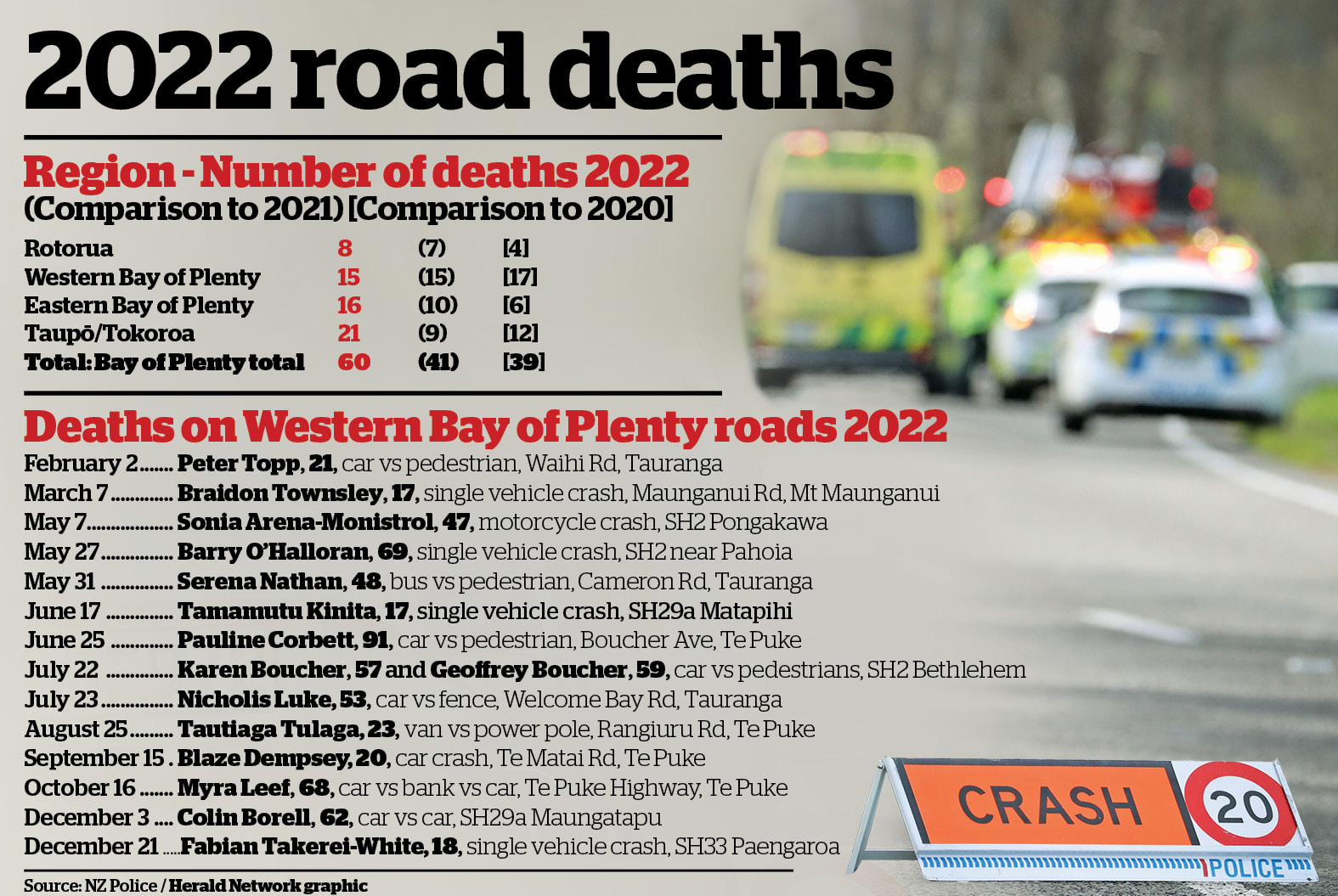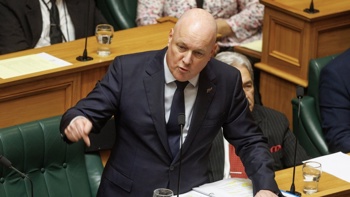Braidon Townsley’s younger siblings light up when they talk about him being in heaven or seeing him in the sunsets.
But for his mum, the hurt of losing her 17-year-old son in a car crash cuts deep.
She won’t forget the traumatic feeling of having to identify his lifeless body in a morgue.
Braidon was a teenager who made his mum, Tauranga woman Cattalina Townsley, proud.
He did most things right and worked hard.
Braidon Townsley, 17, died in a crash on Mount Maunganui Rd. Photo / Supplied
But on March 7 last year, she believes he made the wrong choice behind the wheel of his car — he drove too fast, lost control and hit a power pole on Maunganui Rd.
His coroner’s finding is at least a year away but Townsley said they had been told speed could be the reason for the crash. He was rushing to get somewhere.
Now Townsley wants others to think, just for a moment, how she felt seeing her dead son’s body.
“What if that was your parent coming to see your body? How devastating would that be for them? For a split moment, think about that before you speed and how it will affect all your loved ones around you.”

Braidon was one of 15 people killed on Western Bay of Plenty roads last year. His death was among 60 deaths in the Bay of Plenty in 2022 - one of the worst annual road tolls for several years, information provided by police shows.
But Braidon isn’t just a name on a list of tragedies.
He was a youngster who meant the world to his family, friends and workmates at the Mount Social Club, where he worked fulltime.
He had been saving money to move to Australia to further his hospitality career and those in the industry said he was a natural with the personality and the drive to do well.
Townsley said her son worked so hard to get NCEA levels 1 and 2 but wasn’t aware he had passed before he died.
His family took his ashes to his graduation ceremony the following month. They sat at the ceremony like other proud whānau and received his certificates with pride and sadness.
Braidon with his little sister Stormy, now aged 8, and his mum, Cattalina Townsley, before his baby brother, Psalms, was born. Photo / Supplied
Braidon was described by his mum as an amazing big brother. Townsley’s other children, Stormy, 8, and Psalms, 3, miss him but their grief is different.
“Children are so resilient, it’s hard in some ways. He doesn’t sit in their emotions, he sits in their memories ... They say Braidon is in heaven or they see him in the sunset. They see the beauty in his life without sitting for too long in the sadness of him being gone.”
There’s silence from Townsley before she answers the difficult question of how they coped with their first Christmas without Braidon.
Through tears, she said: “I barely made it through mentally. But I had a lot of good support. I had so many good friends around me who took care of us.”
Townsley is passionate about making sure other parents don’t go through the same grief and wants to make teens aware that sometimes they are faced with split-second decisions that can change everything.
Neurobiologist Robert Sapolsky highlighted teenagers’ tendency to sometimes be impulsive or do wrong things without reason in a recent online article titled “The neuroscience of crazy teenage years”.
Townsley said in that article it showed the front cortex was the last part of the brain to fully mature and often took until they were 25.
The article said teenagers took risks, the highs were higher and the lows were lower because the steadying frontal cortical of the brain hadn’t sped up yet.
Braidon Townsley had dreams of a career in hospitality. Photo / Supplied
Townsley said that message was so important for teens to know.
“Braidon really did just make a fast and consequential decision in that split moment ... You do make risky decisions as a teenager and none of them are perfect but do be more aware of your choices or decisions you do make.”
She said it was also an important lesson for others to not put pressure on drivers to get somewhere quickly.
“No matter what time of night it is, never rush someone to come to your house.”
Inspector Brent Crowe, who had been the Bay of Plenty road policing manager for seven years until the end of last year, said the Bay’s annual road toll usually sat around the early 40s.
While several factors could contribute to fatalities, including speed, drink driving was one of the worst in the Bay of Plenty.
“It’s our nemesis in the Bay of Plenty and usually accounts for 50 per cent of our fatal crashes.”
He said driving drunk had been unlawful since 1969 and a major road safety focus in the 1980s yet police were still discovering significant numbers of drivers risking their lives and the lives of others, by choosing to drive after consuming alcohol and/or illicit drugs.
New Zealand had its highest road toll in 2022 in four years, with 377 people dying on the country’s roads by the end of 2022.
The last time the road toll was as high was in 2018, with a significant drop seen during the years of Covid-19 lockdowns.
The Government’s Road to Zero safety strategy and action plan launched in 2019 had a target of reducing road deaths by 40 per cent by 2030. At the time of the launch it was said on average, one person is killed every day on New Zealand roads and another seven are seriously injured.
The plan’s mission statement said the Road to Zero strategy sets out a vision for a New Zealand where no one is killed or seriously injured in road crashes. It includes guiding principles for how the roads were designed and making road safety decisions.
Take your Radio, Podcasts and Music with you

/cloudfront-ap-southeast-2.images.arcpublishing.com/nzme/H62YUH4XYRGXXNR46ZK2AH4MLQ.JPG)
/cloudfront-ap-southeast-2.images.arcpublishing.com/nzme/IJRFT2BP4FEMRIUGTSBXVSHX5U.JPG)
/cloudfront-ap-southeast-2.images.arcpublishing.com/nzme/WHH3UYMGB5B7ZCPBJC2UVL3YO4.JPG)








